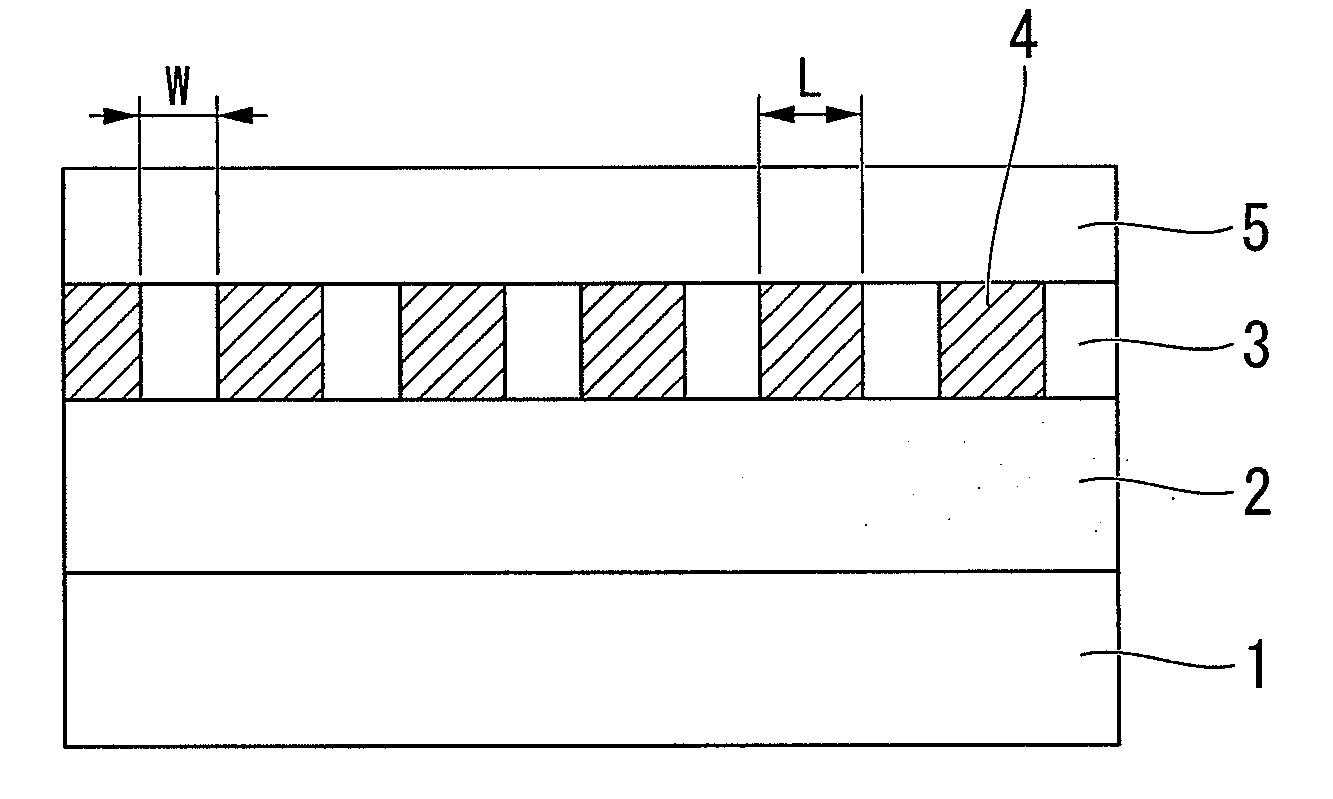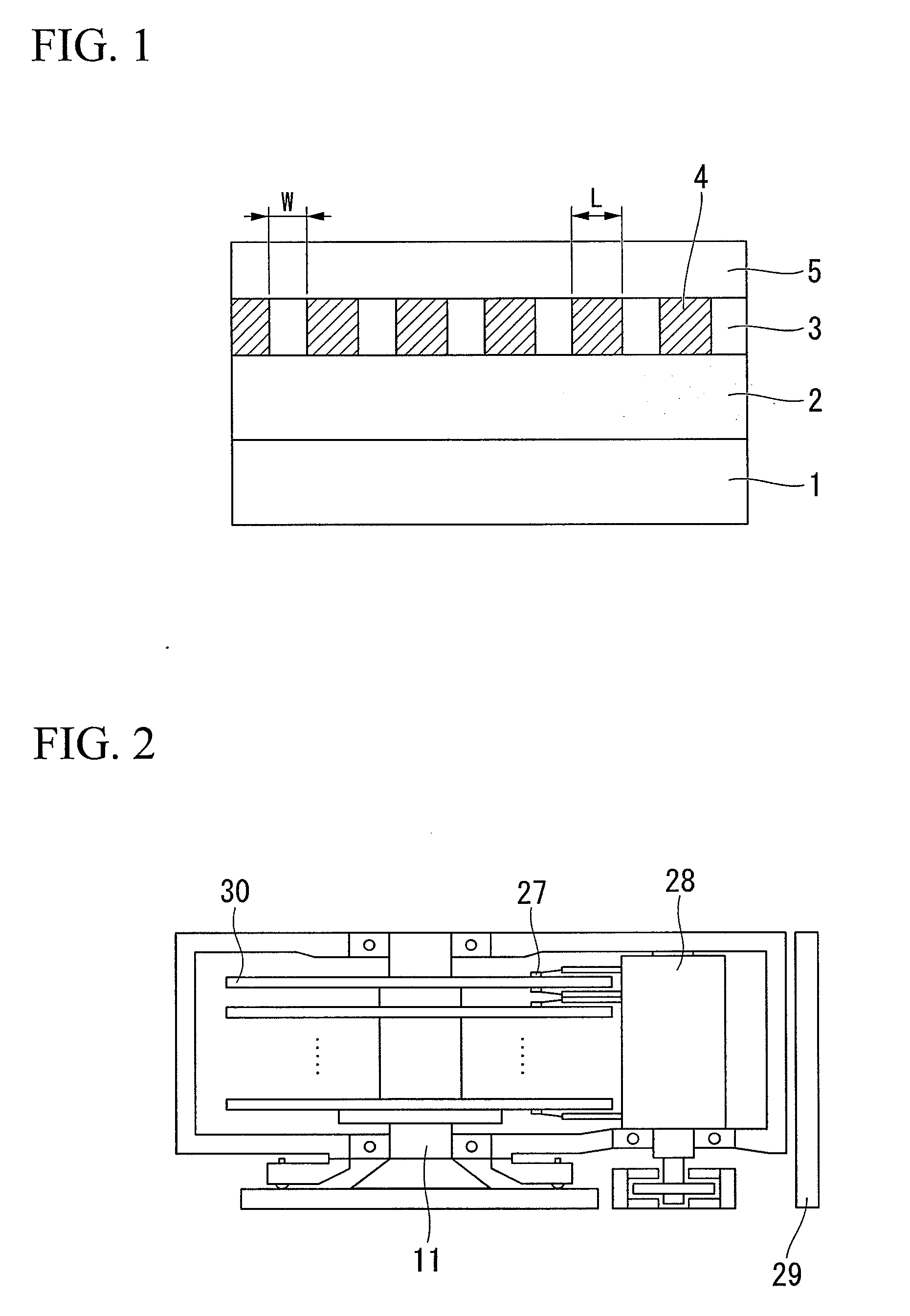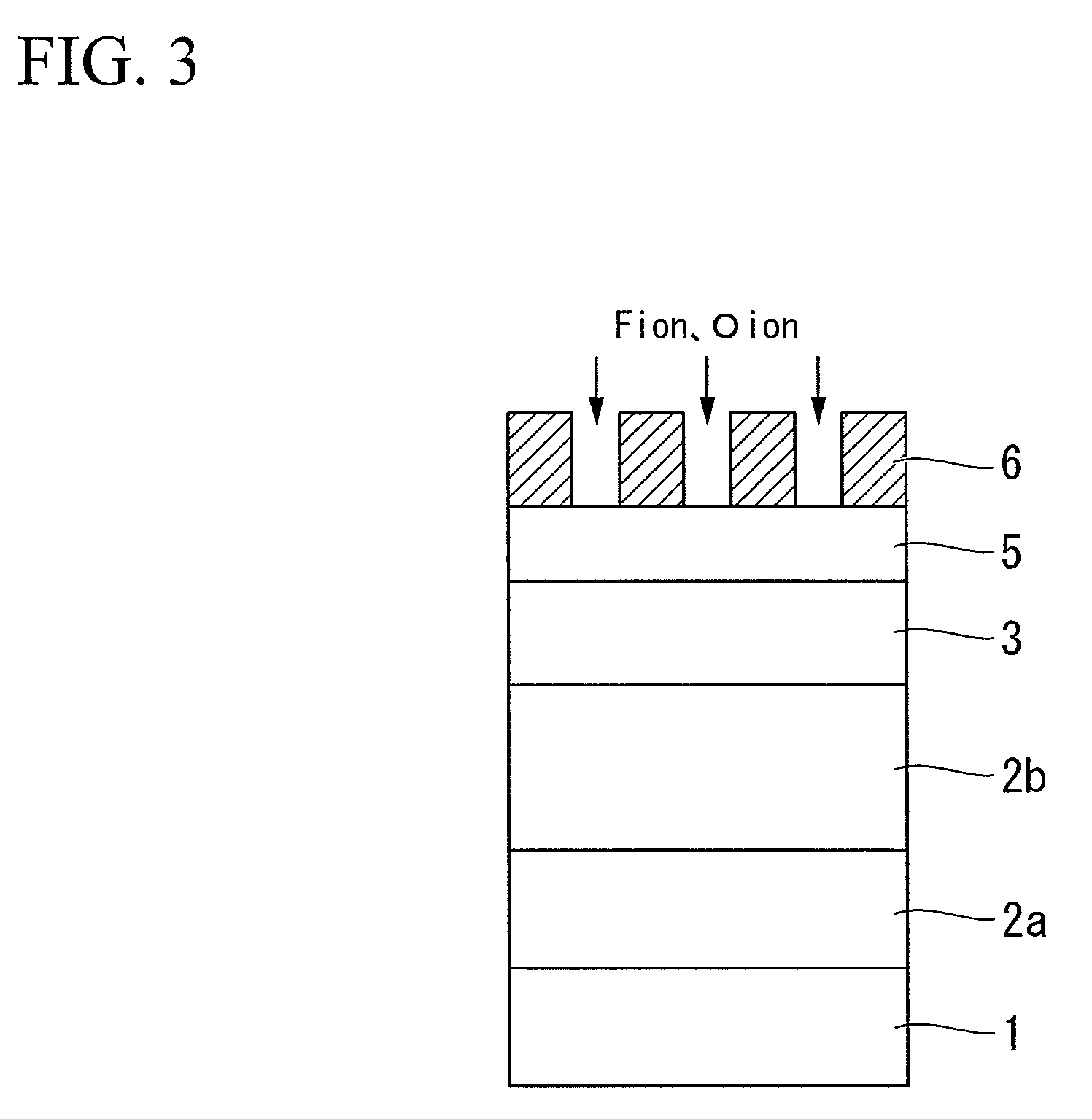Method of producing magnetic recording medium, and magnetic recording and reading device
- Summary
- Abstract
- Description
- Claims
- Application Information
AI Technical Summary
Benefits of technology
Problems solved by technology
Method used
Image
Examples
example 1
[0092]A vacuum chamber, herein a HD glass substrate was set, was vacuumed at 1.0×10−5 Pa or less in advance. The glass substrate was made of a crystallized glass that included Li2Si2O5, Al2O3—K2O, Al2O3—K2O, MgO—P2O5, and Sb2O3—ZnO as components. The outer diameter was 65 mm; the inner diameter was 20 mm; the average surface roughness (Ra) was 2 angstrom (unit: Å; and equal to 0.2 nm).
[0093]On the glass substrate, using the DC sputtering, FeCoB as a soft magnetic layer; Ru as an intermediate layer; and 70Co-5Cr-15Pt-10SiO2 alloy as a magnetic layer were laminated in order; and, using the P-CVD method, a C (carbon) protective layer, and a fluorine-based lubricant film were further laminated as thin films thereon in order. With regard to the thickness of each layer, the FeCOB soft magnetic layer was 600 Å; the Ru intermediate layer was 100 Å; the magnetic layer was 150 Å; and the C (carbon) protective layer was 4 nm on average.
[0094]A UV-curable resin was coated thereon in a thickness...
examples 2 to 22
[0098]Magnetic recording media were produced in the same manner as Example 1. In this case, the type of gas used for generating the reactive plasma, the applied power, the reaction pressure, and the reaction time was modified as shown in Table 1. In Examples 2 to 22, the X-ray diffraction analysis was conducted with respect to the portion of the magnetic layer treated with reactive plasma. In the results, a signal derived from Co disappeared. On the other hand, a signal derived from cobalt fluoride was not observed, and it was confirmed that the portion was formed into an amorphous structure in all Examples 2 to 22.
PUM
| Property | Measurement | Unit |
|---|---|---|
| Fraction | aaaaa | aaaaa |
| Fraction | aaaaa | aaaaa |
| Force | aaaaa | aaaaa |
Abstract
Description
Claims
Application Information
 Login to View More
Login to View More - R&D
- Intellectual Property
- Life Sciences
- Materials
- Tech Scout
- Unparalleled Data Quality
- Higher Quality Content
- 60% Fewer Hallucinations
Browse by: Latest US Patents, China's latest patents, Technical Efficacy Thesaurus, Application Domain, Technology Topic, Popular Technical Reports.
© 2025 PatSnap. All rights reserved.Legal|Privacy policy|Modern Slavery Act Transparency Statement|Sitemap|About US| Contact US: help@patsnap.com



